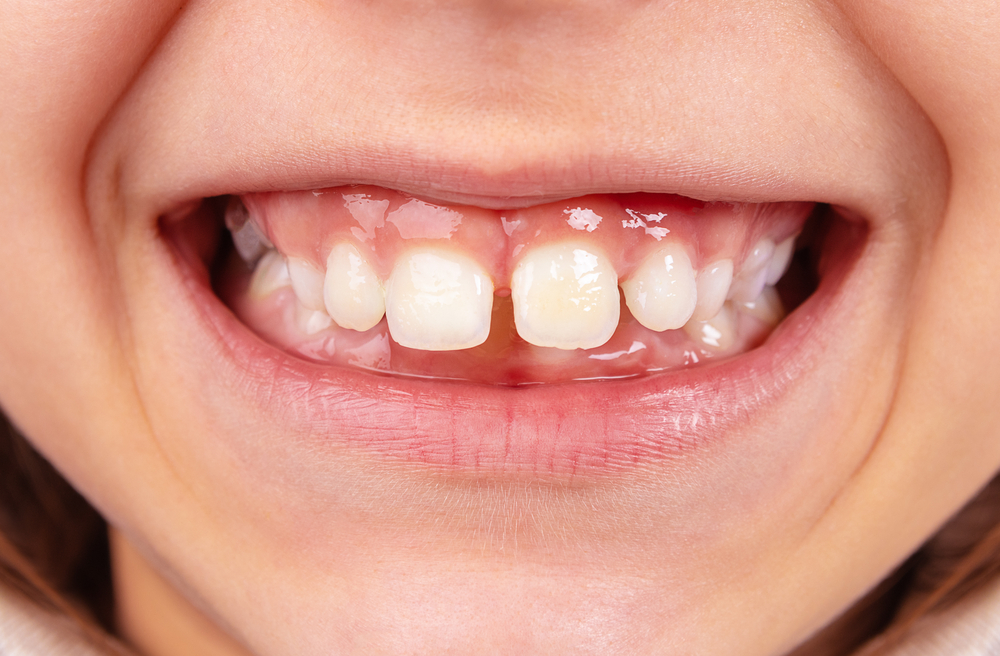There are some dental issues that everyone should be aware of in order to take prompt action and fix them. Having pain in your teeth, an incoming wisdom tooth or even gum problems can be common and it is very likely you know how to identify them and act quickly to get them resolved, but not all dental issues are as easy to recognize. For example, have you heard of diastema? The name of this particular situation might not be as well known but there is a high chance you know of this condition and might have even seen someone who has it. Luckily, this situation is generally not urgent and tends to fall into the “cosmetic dentistry” category, although in some instances there can be serious health issues behind it that would need to be addressed. Let’s analyze this condition to see exactly what it is, how urgent is it and how you can fix it.
What is diastema?
Diastema refers to a gap between the teeth and it can actually affect any teeth. However, it is most noticeable when the gap is between the front upper teeth (midline diastema), which can make it seem as being more common in these front teeth.
Who can get a diastema?
Diastema can affect everyone, children and adults alike. Fortunately, the gap can naturally close in kids once their permanent teeth grow, so it is not always necessary to fix the issue. Gaps between baby teeth can sometimes mean their adult teeth will be sizeable and that there will be the necessary room for their new teeth to grow. So, it’s better to wait for their adult teeth to settle in before even thinking about a gap in teeth becoming a problem.

Diastema prevalence also varies based on ethnicity/race, with some races more likely to get a diastema than others. For instance, according to certain studies, individuals of African descent are far more likely to develop diastema naturally than Caucasians or individuals of Asian descent.
How wide is a diastema?
A typical diastema will be wider than 0.5mm. Anything less than that may simply be a small space between teeth, which doesn’t qualify as a diastema.
What causes diastema?
Diastema is linked to several causes, such as:
- Genetic factors and normal development
Diastema can be a normal occurrence linked to genetics simply because some people are genetically predisposed to have small teeth in relation to their jawbone, which results in gaps between teeth. Most kids will get a gap between their front teeth as part of their normal teeth development. As we now know, this should not be concerning because the natural closure of diastema can happen when upper canine teeth are completely formed. The differences in shape, positioning of teeth, and size (which are largely genetic) may also result in gaps i.e., small teeth and an abnormal frenum or oversized labial frenum (connective tissue connecting the gums and lips).
- Missing teeth
Diastema can also develop if tooth/teeth are missing. A midline diastema (space between two front teeth) tends to appear if the lateral incisors (upper teeth positioned on either side of the front teeth -adjacent teeth) are missing.
- Gum disease
Periodontitis (gum disease) is known to damage the gum tissue leading to loose teeth or teeth/tooth loss. Missing teeth can cause gaps.
- Poor swallowing reflex
During a normal swallowing process, the tongue usually presses on the “roof” of the mouth but, for some people, their tongue can also push against the front teeth as they swallow. This poor swallowing reflex can push the front teeth over time, resulting in a gap between teeth.
- Habits
Bad habits like lip sucking, lip biting, thumb sucking, and tongue thrust, among other habits that exert pressure on the teeth, can cause diastemas. Poor oral hygiene can also cause gum disease and cause diastema in adult patients.
How do you fix diastema?
- Fixing a diastema linked to gum disease
Fixing a diastema will generally depend on the underlying cause. If the diastema is linked to gum disease, periodontal treatment options should be administered to treat the bacterial infection. Periodontal treatment can involve deep cleaning, scaling, use of antibiotics, and surgery in severe cases.
- Fixing a diastema caused by genetics, missing teeth, and habits
Most diastemas linked to genetics don’t cause any health concerns and the gap won’t be harmful in any way. Regardless of that, here at Annex Dentistry we can still help you fix this situation if you would like to close the gap. If there isn’t a severe reason behind your condition, we have several cosmetic procedures we can offer you to bring back your beautiful smile:
Dental bonding: this is a simple and non-invasive procedure in which we would apply tooth-colored composite resin to your teeth and sculpt it to cover the gap.
Porcelain veneers: this is a thin, tooth-shaped shell of porcelain that covers the front of each tooth which we can use to close the gap between your teeth.
Dental bridges: in some extreme cases we could use a dental bridge to fix the gap.
Dental crowns: another way to fix an extreme case of diastema can be with dental crowns.
Conclusion
As you can see, a diastema is not always an urgent and worrisome condition but it is still good to address the situation in order to understand the reason behind it and decide if it is something you would like to fix. Attending regular check-ups with our team of expert dentists is a great way to stay on top of your oral health, which includes finding any potential dental issues in time. Click here to contact us if you’d like to schedule an appointment. You can also send us an email at [email protected] or call us at 416-962-4022. We can analyze if you have in fact a diastema or we can also help you maintain your oral health with many other procedures. Let’s get back your healthy and beautiful smile!
